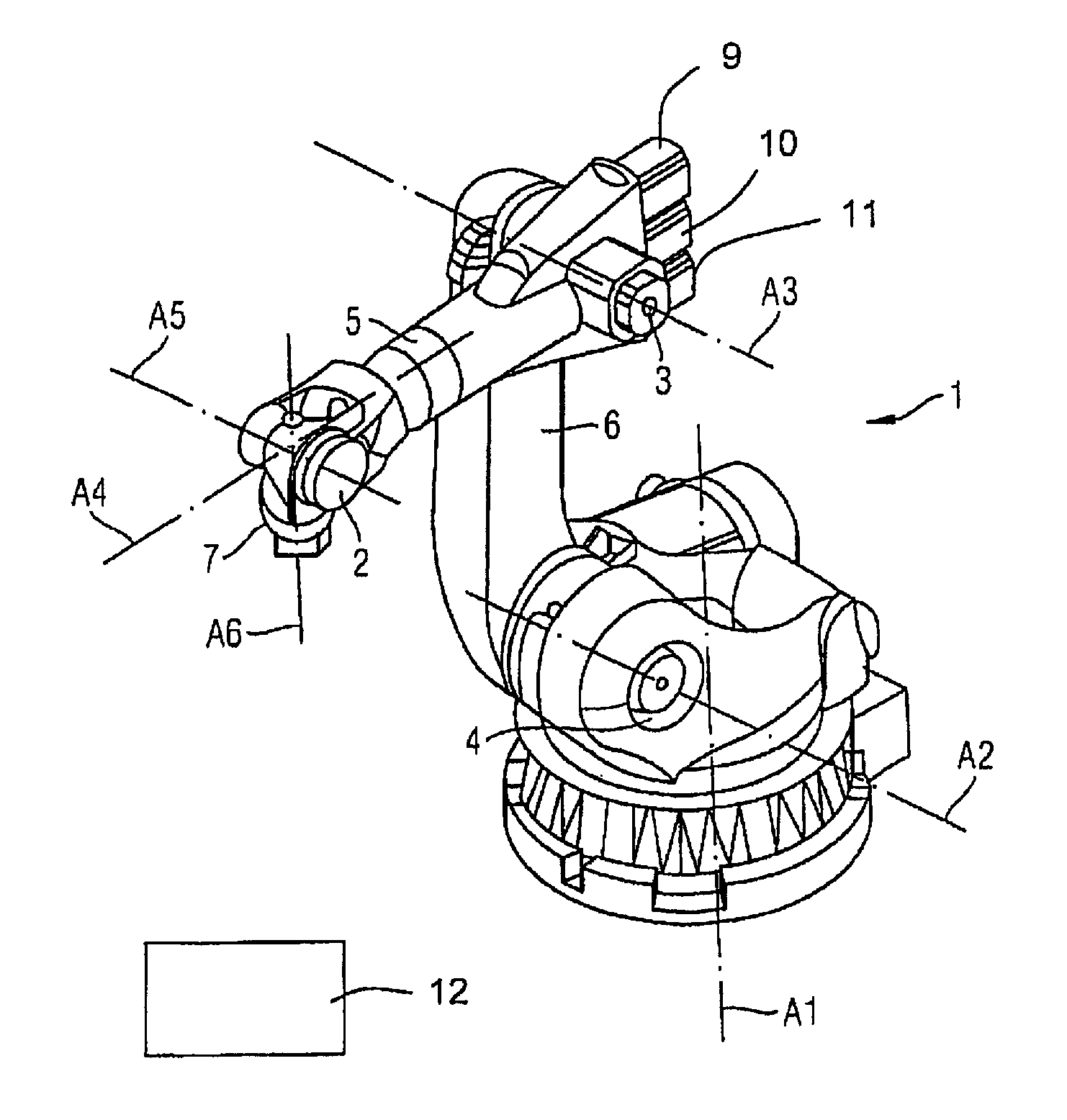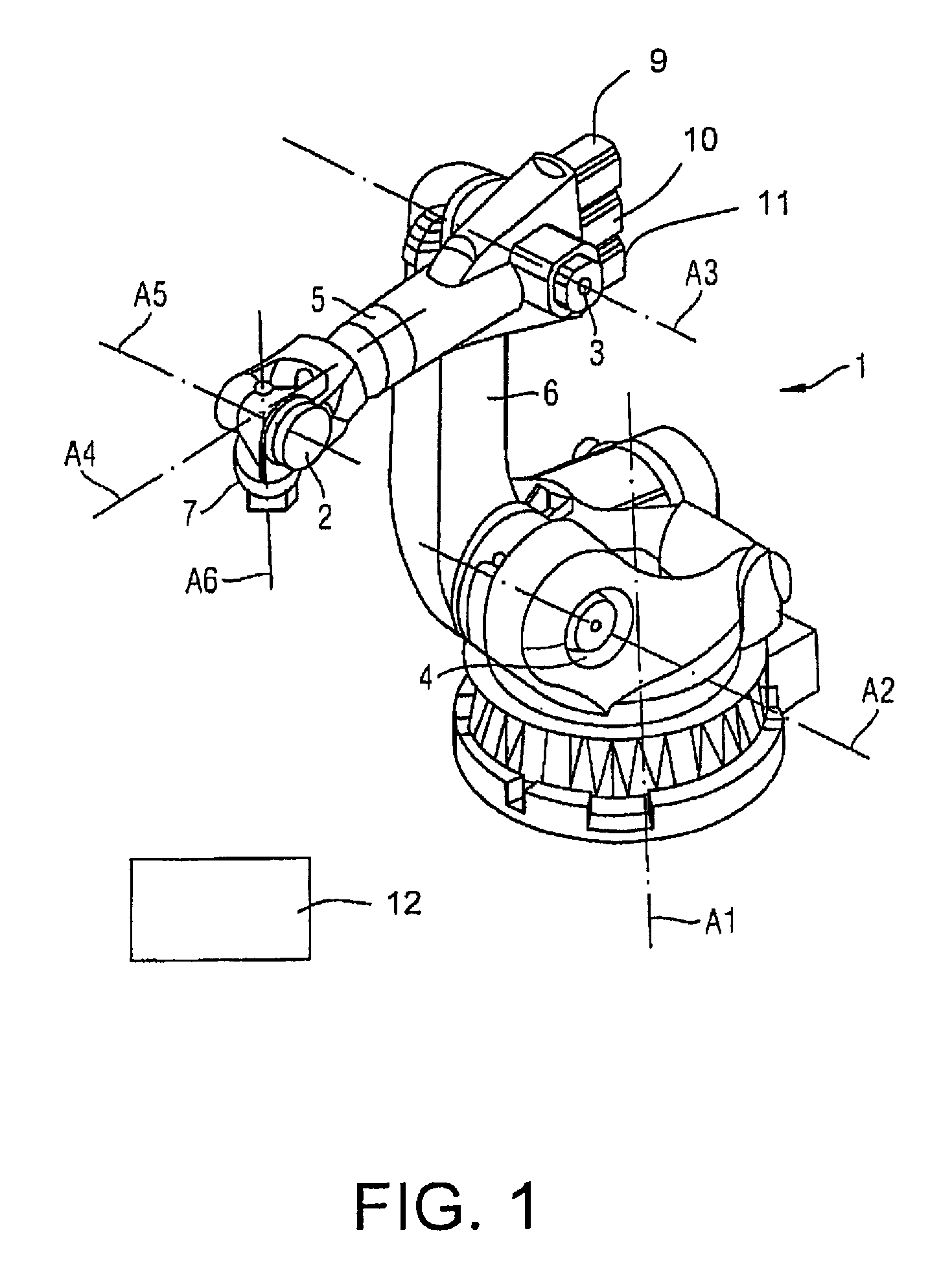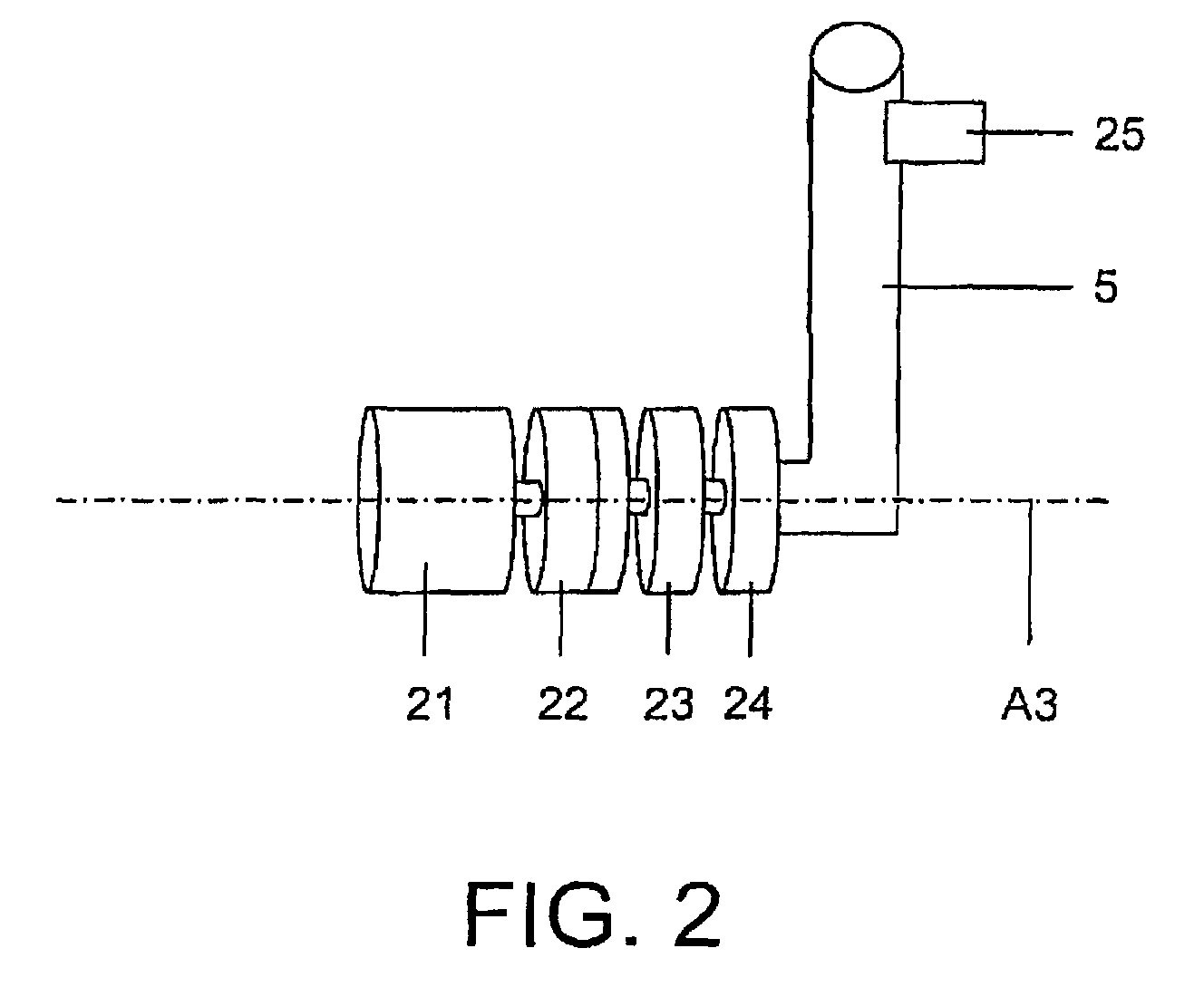Method to test a brake of a robot
a robot and brake technology, applied in the direction of force/torque/work measurement apparatus, instruments, manufacturing tools, etc., can solve the problems of large motor torque and inapplicability of the electric motor
- Summary
- Abstract
- Description
- Claims
- Application Information
AI Technical Summary
Benefits of technology
Problems solved by technology
Method used
Image
Examples
Embodiment Construction
[0037]FIG. 1 shows a robot 1 with kinematics for movements in, for example, six degrees of freedom. The robot 1 has (in a generally known manner) articulations 2 through 4, arms 5, 6, six movement axes A1 through A6 and a flange 7 at which an effector (for example a tool; not shown in detail) can be attached.
[0038]Each of the movement axes A1 through A6 is moved by an actuator (not shown in detail). The actuators respectively comprise an electrical motor 9-11, 21, for example, as it is generally known to those skilled in the art. FIG. 2 shows the arm 5 that can be pivoted on the axis A3 by means of the motor 21.
[0039]In the case of the present exemplary embodiment, the electrical actuator associated with the axis A3 possesses a gearing 23. A movement of the arm 5 relative to the axis A3 can also be braked with a brake 22. A torque acting on the axis A3 is measured with a torque sensor 24. A torque sensor and a brake can likewise respectively be associated with the remaining axes A1,...
PUM
| Property | Measurement | Unit |
|---|---|---|
| torque | aaaaa | aaaaa |
| speed | aaaaa | aaaaa |
| actuation torque | aaaaa | aaaaa |
Abstract
Description
Claims
Application Information
 Login to View More
Login to View More - R&D
- Intellectual Property
- Life Sciences
- Materials
- Tech Scout
- Unparalleled Data Quality
- Higher Quality Content
- 60% Fewer Hallucinations
Browse by: Latest US Patents, China's latest patents, Technical Efficacy Thesaurus, Application Domain, Technology Topic, Popular Technical Reports.
© 2025 PatSnap. All rights reserved.Legal|Privacy policy|Modern Slavery Act Transparency Statement|Sitemap|About US| Contact US: help@patsnap.com



